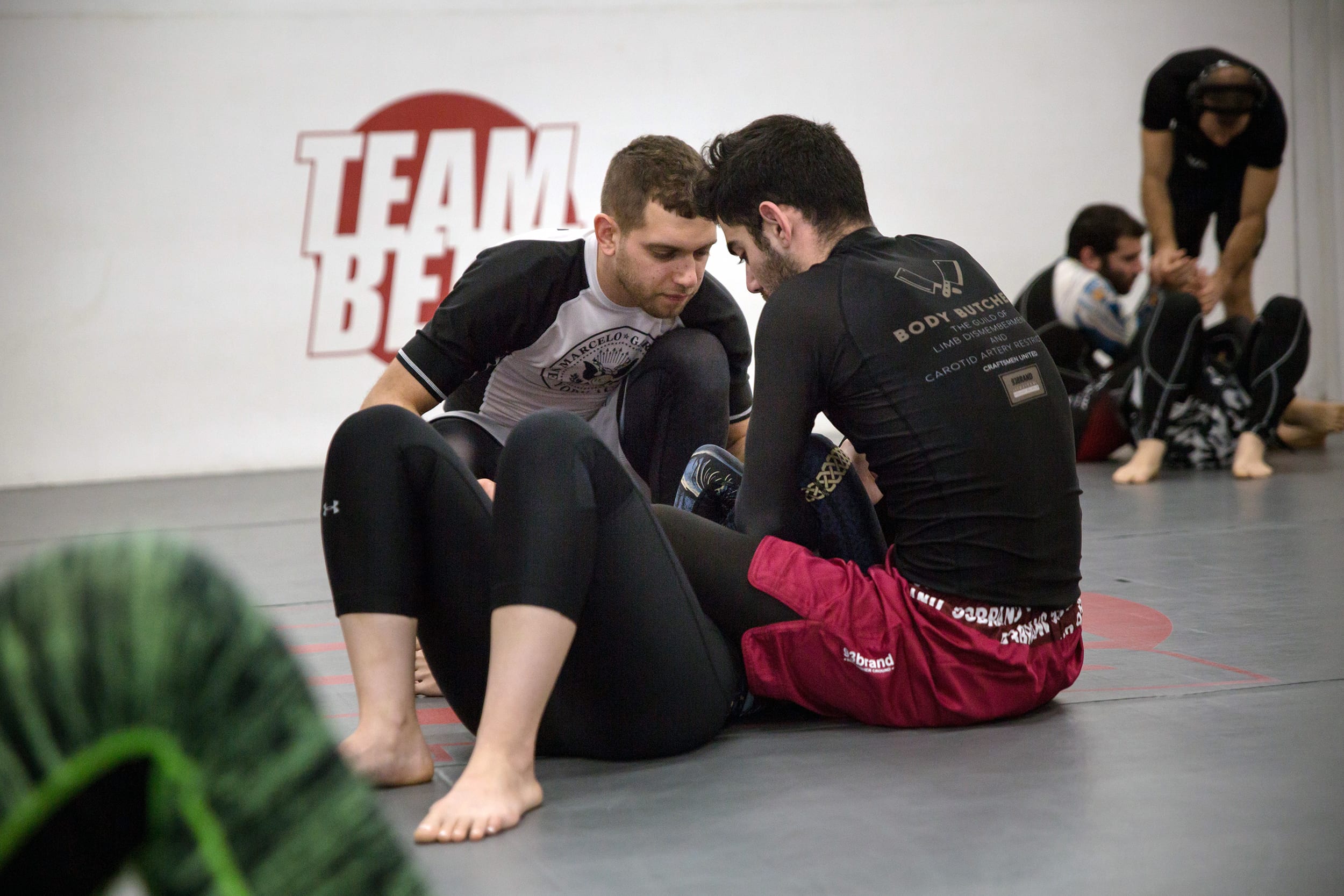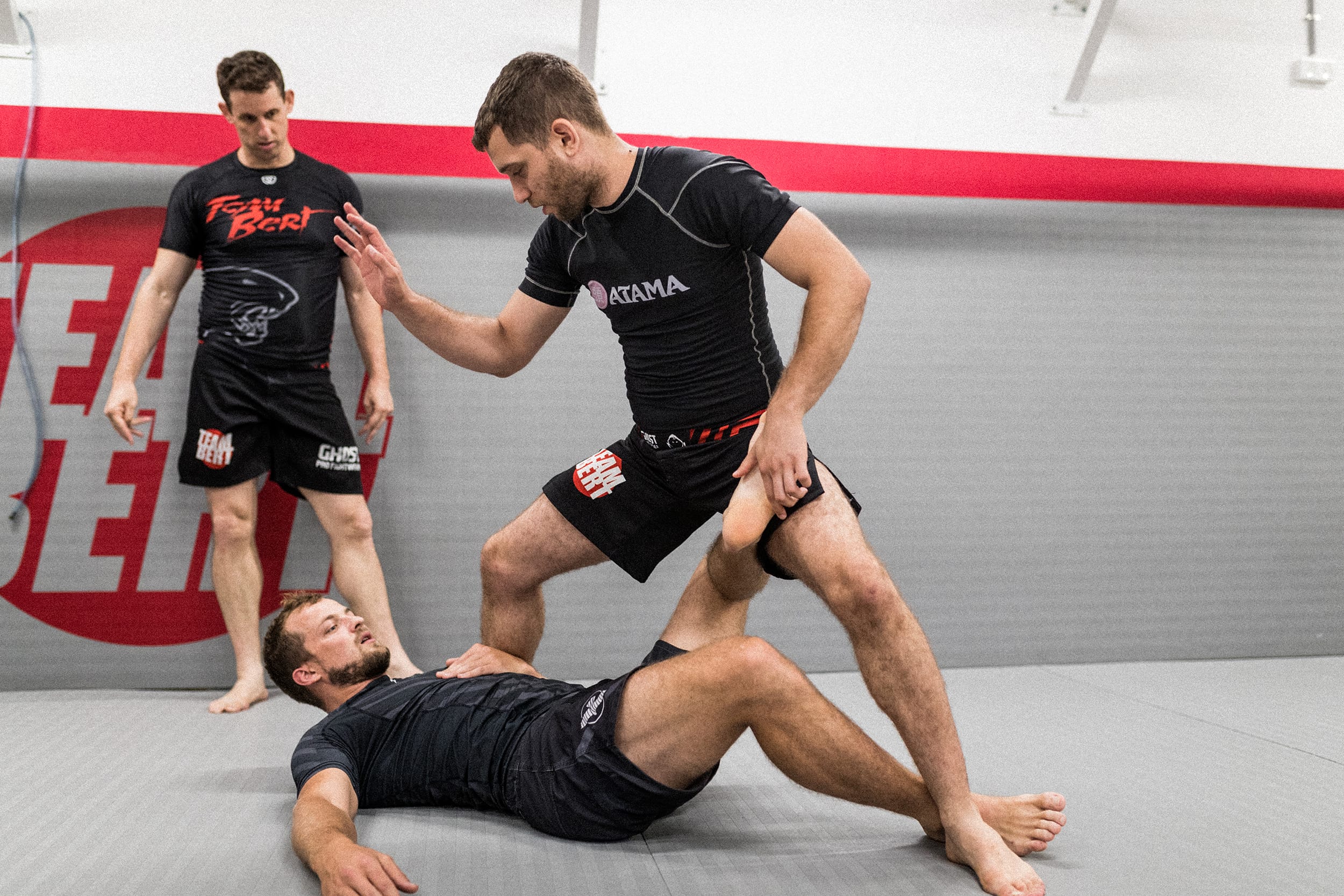Make sure you follow Asaf in Instgram (@asaf_michbjj), you will find great content there.
Hello Asaf, can you please introduce yourself
Hi! My name is Asaf Michaelovitz, and I’m 32 years old. I live in Tel Aviv, Israel, and have been training in Jiu Jitsu for about 9 years. I’ve been a black belt for 3 years, and have been teaching for 3 years.
When did your Jiu-Jitsu journey begin? How did you find out about BJJ?
Before I ever tried Jiu Jitsu, I was a Krav Maga instructor, so I’ve been involved in Martial Arts for a really long time. Being in those circles, I eventually stumbled upon some matches, and I was really interested in the first match between Eddie Bravo and Royler Gracie. A friend of mine and I got a copy of one of Eddie’s DVDs, and for a whole year we practiced the moves and sparred in his basement. After that I decided to take it more seriously and joined a local gym.

There have been many, but I think the biggest one by far is Marcelo Garcia. His style and approach to the game really resonated with me, and I’d say my best moves derive from him more than any other person. Another person who had a big impact was Braulio Estima, from whom I learned my trick to overcoming Blue Belt Blues. I was watching Budo Jake’s Rolled Up series and saw Braulio do this crazy move that today I call the Deadlift Armbar. I was so captivated by it that I spent hours watching it just to figure out how it’s done, and then months and years working on it in sparring. Today it’s a super powerful move that I’ve caught players at every level with, and that ability comes from the fact that it’s just a really fun move to do and train so I was very motivated to train it.
What is your favorite position? What about submission?
It’s hard to pick just one, but I’m very proud of my crucifix position. I started training the crucifix because guys that were much bigger and stronger than me kept escaping when I took their back, and the crucifix really solved a lot of problems for me because there’s so much more control over my partner’s arms. Favorite submission would have to be either the deadlift armbar I previously mentioned or the crucifix armbar.

How do you see Jiu Jitsu in the next 10 years?
I think we’re due for an overhaul of the way Jiu Jitsu information is shared. DVDs are still, for the most part, pretty expensive, and not always well organized and easy to view. I think that over the next 10 years we’re going to see the way that information is disseminated become more and more common outside the DVD platform, whether that means through instagram in videos the way that I and many others share, or in new ways that are hard to foresee. There’s a lot of advantages to the DVD format, but I think there are a lot of disadvantages as well, and for many people (especially beginners) it can be difficult to absorb and digest the information passed through DVDs, so I think that we’re really ripe for an upgrade.
View this post on Instagram
Watching video content. Whether it’s matches, DVDs, or technique videos, consuming online content was huge for me throughout my journey. As a beginner, it was an important learning tool from which I formed most of my game. As a black belt, I use it to build classes for my own training. You probably will not get to roll or learn from all of the best black belts in the world, but you can still expose yourself to their amazing knowledge through video content.
What you do in your free time, what else you love to do? What does bjj lifestyle mean for you?
I’ve always really loved strategy games. I think the way that I play Jiu Jitsu and the way that I play strategy games is very similar, and they both kind of scratch the same itch. I also love to cook, and I think I make the best acai you can get outside of Brazil! To me, the BJJ Lifestyle is a lot about integrating Jiu Jitsu into your life as someone who isn’t a competitor. I train/teach 4-5 days a week in the mornings and in the evenings, and I watch a lot of DVDs so I’m always absorbing new information and staying current.
Where do you see yourself in 5 years?
This year I started my degree in Mathematics with a Specialization in Computer Science, so I hope in 5 years I’ll be able to work more in that field. I love Jiu Jitsu, but unfortunately in Israel it’s very difficult to earn a living doing it. I don’t want to ever stop teaching though, so I’m striving to continue to grow my classes and build up the Jiu Jitsu community of which I’m a part. The community and students that I have, even today, are a very important part of my life in addition to my Jiu Jitsu practice itself, so I’ll never let that go.
What is your advice for people who train bjj? Everyone speaks about white belts because they are the most confused ones, can you give some advice for the other colors too?
I deeply believe in learning the underlying principles. The advantage that a technique gives you over your opponent is derived from some principle which you are using to create leverage, speed, or some other superiority. At first, you will need to learn pure moves and technique, but over time you should study the principles that underlie those techniques. I break it down into three stages:
White and Blue Belts: Focus on WHAT you need to do. Learn to identify and use techniques at the most basic level so that you’re rarely totally lost. What are the critical steps in a technique that are needed to make it work?
Purple Belt: Focus on WHY you’re doing the moves you are doing, and why you are doing them in a particular way. What are the circumstances that make a certain move or counter succeed, but not in other cases?
Brown Belt and Above: Now that you’ve identified some principles, investigate when can you BREAK a principle because you’re actually following a different principle. Study how you can prioritize principles so that you understand when you can break them, and which principles override others.

We care about Jiu Jitsu so much that we decided to create this page for all the people like us – that eat, breath and live the Jiu Jitsu Lifestyle! We truly hope our content will make every one of your days better, on the mat and off the mat!

5